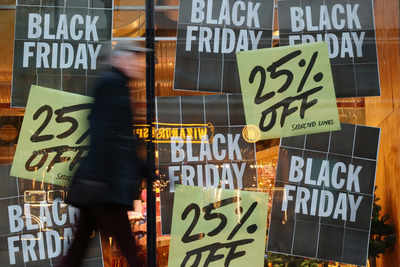As November ends, Black Friday kicks off the
US holiday shopping season
, a time known for finding the best deals. However, this year, retailers are preparing for shoppers who are more focused than ever on finding the best bargains and maximizing the value of their money.
Though inflation has stabilized after the substantial price hikes during the Covid pandemic, consumers are still feeling the financial strain. Consequently, bargain-hunting strategies like grabbing early giveaways and waiting for last-minute steals have become a trend.
Vivek Pandya, leading insights analyst at Adobe Digital Insights told AFP that as compared to previous years, 2024 holiday shoppers are “even more preoccupied and very focused around value and discounts.”
“We do see stronger price sensitivity on the part of the consumer and they are very responsive to deals and event-tie deals,” he said.
This year, consumers have eagerly participated in special discount events like Memorial Day sales and Amazon’s “Prime Day.”
Black Friday, marking the beginning of the gifting season, falls the day after Thanksgiving and kicks off a busy shopping weekend that also includes “Small Business Saturday” and “Cyber Monday.”
To combat the ever evolving concern of inflation, major retailers like Target have shifted their “Black Friday” promotions to October or even earlier.
Consumer prices on average were 22 percent higher in August 2024 compared with January 2020, according to Pew Research, and popular discontent with inflation is one reason Donald Trump won the US presidency in November.
In August 2024, prices surged by an average of 22 percent compared to January 2020, according to Pew Research. Inflation is also believed to have played a role in Donald Trump’s victory in the November elections.
Inflation continues to influence retailers’ discounting strategies as they aim to meet the demands of the market.
At Target, shoppers have become accustomed to gathering at the chain’s “Circle Week” savings events, held almost once every quarter. These events have resulted in reduction in purchases a week before and after the events, as per the executives.
After a lengthy period of inflation, “consumers tell us their budgets remain stretched,” Target CEO Brian Cornell told analysts.
“They’re becoming increasingly resourceful in their shopping behaviors, waiting to buy until (the) last moment of need, focusing on deals and then stocking up when they find them,” he said.
For the 2024 season, the National Retail Federation has forecasted holiday spending growth of 2.5 to 3.5 percent, compared to the previous year, reaching as much as $989 billion over the two-month period.
Economists have pointed to an easing of gasoline prices as a supportive factor, along with an ebbing in the costs of some food items.
Economists also signalled lowered prices for certain food items, supported by relaxation in gasoline prices.
The inflationary environment has had a particularly weighted down lower-income households, with banks citing rising charge-off rates as a sign of growing financial stress.
However, some chains, like off-price apparel retailer Burlington Stores, have seen improvements for this group of consumers. According to Burlington CEO Michael O’Sullivan, some of the company’s strongest sales have come from stores located in low-income zip codes.
“Maybe for the first time since 2021, it looks like their real incomes are finally edging up,” O’Sullivan said on a conference call this week.
Thanksgiving, which always falls on the fourth Thursday in November, lands on its latest possible date in 2024. As a result, retailers are adjusting to a holiday season that is five days shorter than last year.
A week before the national holiday marking the start of the gifting season, the electronics chain Best Buy also kicked off its Black Friday sale. This year, it reintroduced its “Doorbuster” sales every Friday, both in stores and online—an event many retailers had discontinued in recent years due to concerns over crowded lines and the risk of injury.
Adobe Digital Insights reported on Wednesday that online sales during the first 24 days of the holiday season had increased by 9.6 percent year-over-year, surpassing the 8.4 percent growth projected for the season.


